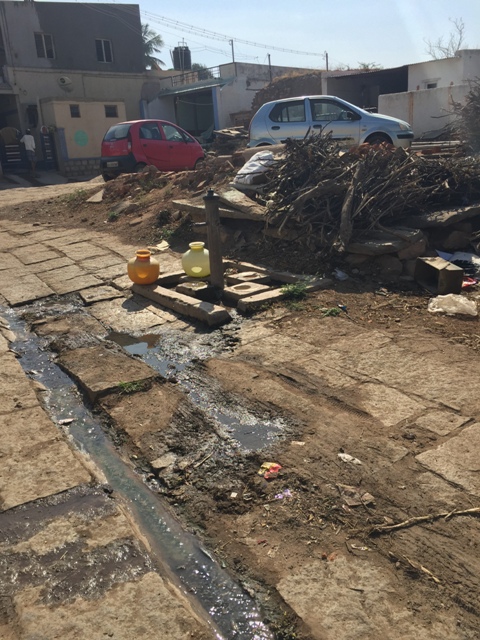/sub-categories/people-and-organisations
People and Organisations
Simhastha leaves farmers fuming
Posted on 12 Jun, 2016 07:38 PMRamesh Mali, a farmer in his late thirties, looks at his farmland nervously. It has been 13 days since the Simhastha Maha Kumbh festival, 2016, concluded. The district administration had acquired his four bigha land (approximately 0.64 hectares) for the festival. The barricades and the concrete left on his land give us the idea that the land is not fit for farming this season.

Young professionals lead the way in water and sanitation
Posted on 31 May, 2016 12:22 PM Hirehandigola village in Gadag district of North Karnataka is an unsurprising picture of rural India.
Hirehandigola village in Gadag district of North Karnataka is an unsurprising picture of rural India.

Mangrove nurseries protect coasts and livelihoods
Posted on 13 May, 2016 01:40 PMKendrapara and Jagatsinghpur are among the most vulnerable districts affected by cyclones and climate change in coastal Odisha. In the last few decades, the coasts of Odisha have witnessed three major devastating storms.

Government schemes converge at Sarda Panchayat in Sambalpur, Odisha
Posted on 24 Apr, 2016 11:41 AMSince India became independent in 1947, the central and state governments have introduced various rural development schemes, and have been trying to get them to converge. While this effort hasn't been as impactful on a large scale, there are some success stories. Sarda Panchayat in Sambalpur, Odisha is one.

The Yamuna, a song, and a dance
Posted on 23 Mar, 2016 09:13 PMThe World Culture Festival (WCF) organised by the Art of Living Foundation (AoL) has been in the news ever since Manoj Misra, an environmental activist and convenor of Yamuna Jiye Abhiyan, filed a petition with the National Green Tribunal (NGT) in December 2015.

Water is more than a job for them
Posted on 21 Mar, 2016 08:39 AM"A job isn’t just a job. It’s who you are". That quote seems to define the five people who are being honoured for their extraordinary dedication in ensuring water to the people in Nagaon and the newly declared Hojai district of Assam.

Villagers in Puri, Odisha return to agriculture after a 32 year hiatus
Posted on 09 Mar, 2016 10:43 AMWater logging has been a persistent problem for farmers in the coastal areas of Puri, Odisha. Construction of national highways has affected the natural water drainage system and has changed the lands of thousands of farmers since 1980.

Jharkhand's octogenarian water warrior
Posted on 28 Feb, 2016 01:39 PMIt was 1961. Simon Oraon, a Class IV school drop-out began his journey against drought in Bedo, a tribal block of Ranchi, Jharkhand. An idealistic young man, he along with his fellow villagers began constructing earthen dams to capture rainwater for recharging groundwater.

The semi-arid regions of the Moyar-Bhavani basin
Posted on 17 Jan, 2016 10:56 PMToday's rural poor operate in highly risky and uncertain environments. Grappling with multiple stresses like eroding natural resources, poor assets and increasing climate variability, they are constantly adjusting their lives and livelihoods--changing a crop grown, digging another well, or migrating to a nearby town.

Lessons on ecology from the Apatani tribe in Ziro Valley
Posted on 17 Jan, 2016 03:42 PMZiro Valley, which figures in the tentative list of UNESCO World Heritage Sites as a unique cultural landscape, sits at a height of 5600 feet in Arunachal Pradesh. It is inhabited by the Apatani tribe who are completely confined to the valley.
